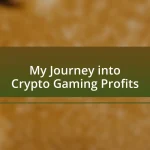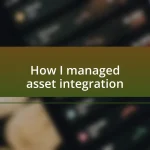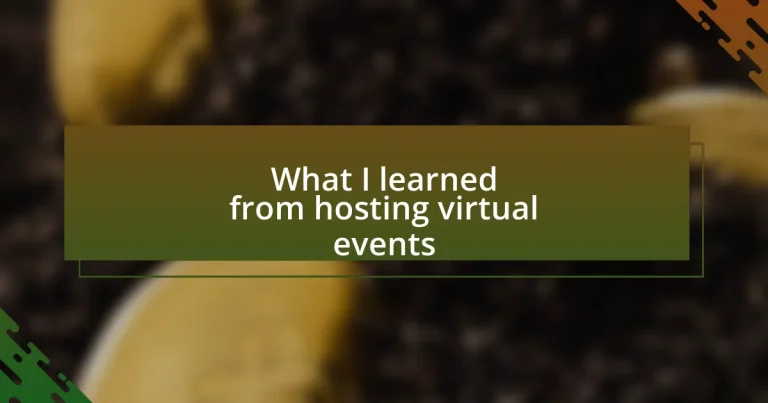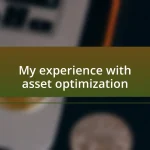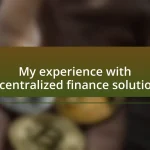Key takeaways:
- Virtual events offer global reach, cost-effectiveness, and improved accessibility, enriching participant experiences.
- Meticulous preparation, including clear objectives and audience engagement strategies, is crucial for successful hosting.
- Utilizing technology effectively enhances engagement and collaboration, while thorough post-event feedback analysis informs future improvements.
- Promoting events through social media and partnerships can significantly boost attendance and participant connection.
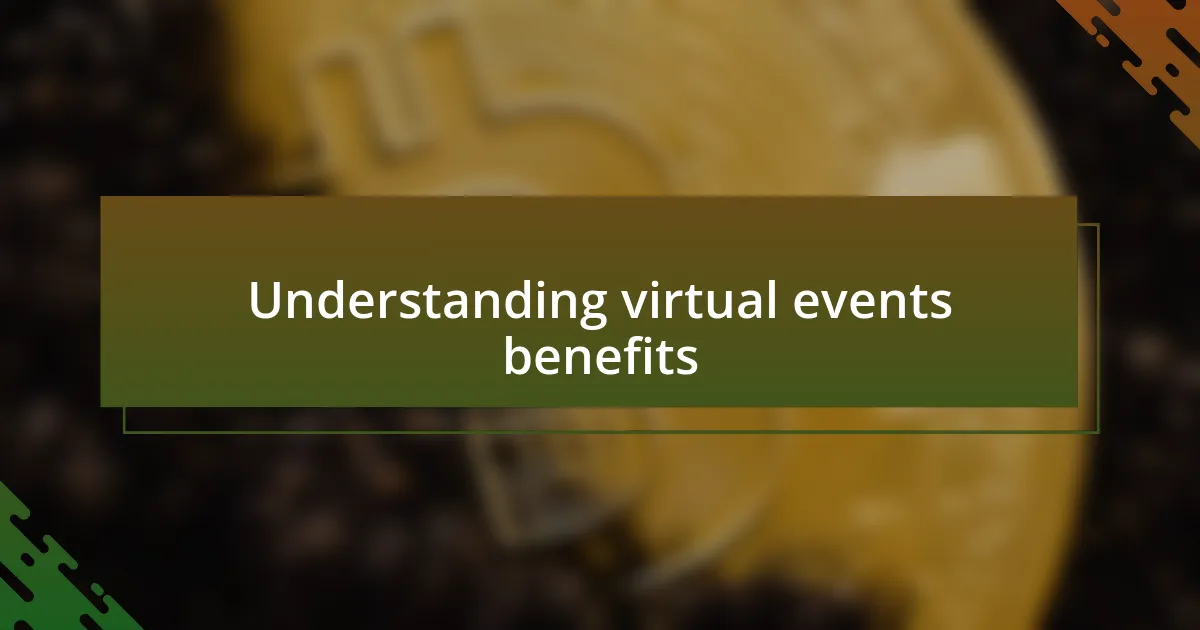
Understanding virtual events benefits
One of the biggest advantages I’ve experienced with virtual events is the ability to connect with a wider audience. I remember hosting a conference where attendees tuned in from multiple continents. It made me realize that geography is no longer a barrier; this global reach creates an opportunity for diverse perspectives and insights that can enrich the discussion.
Another benefit I appreciate is the cost-effectiveness of virtual events. I’ve often seen budgets strained by the need for venue rental, catering, and travel expenses for speakers. In contrast, switching to a virtual format significantly reduced these costs, allowing me to reallocate funds toward better technology or enhanced marketing efforts. Isn’t it amazing how you can spend less and still provide a high-quality experience?
Moreover, accessibility is a crucial benefit that stands out to me. For instance, one of my attendees shared how they’d never have been able to join an in-person event due to their mobility challenges. It warmed my heart to hear that virtual platforms not only made the event possible for them but also provided options like captions and recordings. How powerful is it to make an event welcoming for everyone? The impact of inclusivity is something I carry with me in every virtual endeavor.
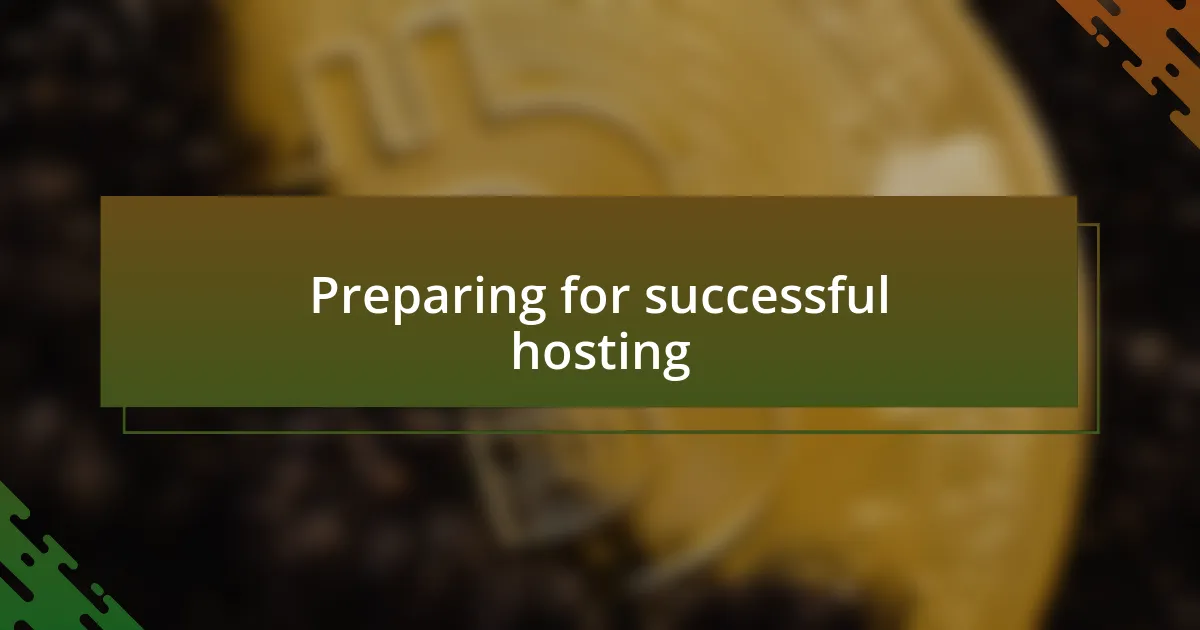
Preparing for successful hosting
To host a successful virtual event, your preparation must be meticulous. I’ve found that drafting a detailed checklist helps keep everything on track. For me, the excitement of planning is often mixed with a bit of anxiety, but knowing I have everything lined up provides a comforting clarity. Here are key elements I always focus on:
- Define clear objectives for the event.
- Select the right platform based on your audience’s needs.
- Schedule rehearsals to test technology and flow.
- Create detailed agendas and timelines for each session.
- Promote the event effectively across relevant channels.
Another crucial aspect of preparation is audience engagement. I remember a particular instance when I implemented breakout sessions, which added energy and allowed for meaningful discussions. It really drove home the importance of making attendees feel included and valued. When people can interact, they’re more likely to remain engaged throughout the entire event. To ensure this, I suggest:
- Use interactive features like polls and Q&A sessions.
- Foster a friendly environment where participants can introduce themselves.
- Design activities that encourage networking and collaboration.
- Keep communication open before and after the event to maintain interest.
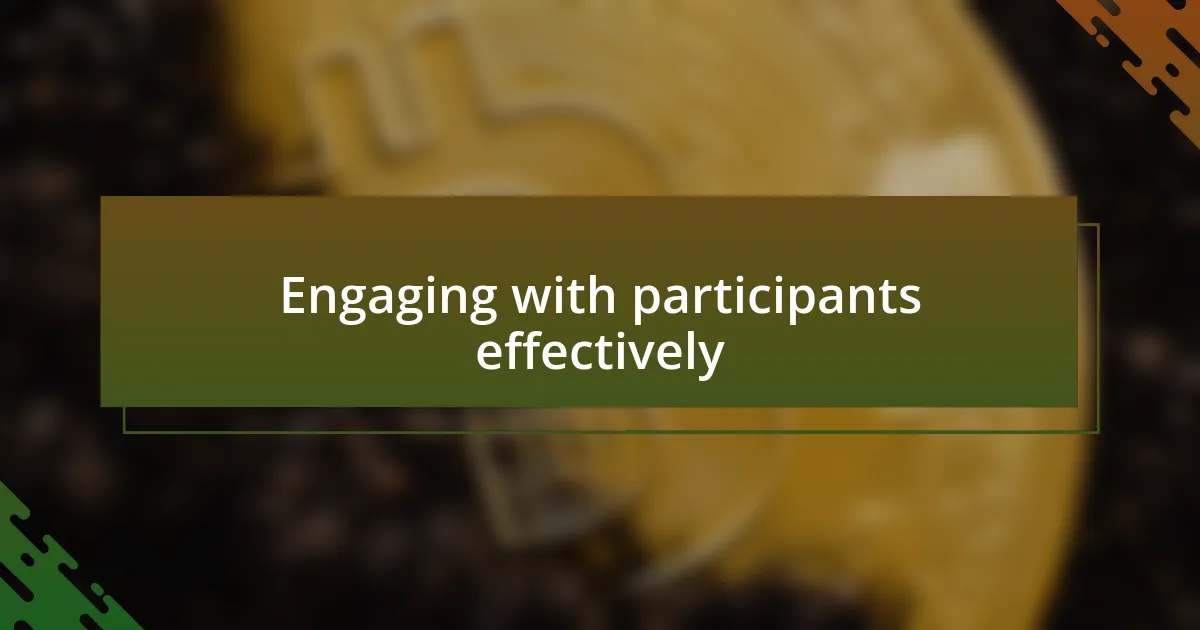
Engaging with participants effectively
Engaging with participants effectively is a game-changer when hosting virtual events. For me, the secret lies in striking a balance between structured agendas and allowing space for organic conversations. I vividly recall a session where I encouraged participants to share their experiences mid-way through the presentation. The surprise was palpable as attendees connected over shared challenges, creating a sense of community that transformed the atmosphere from a passive viewing to an active dialogue.
Moreover, I’ve learned that leveraging technology can significantly enhance engagement. During one event, I utilized live polls to gauge participant feedback in real-time. The thrill of reporting results to the attendees right afterward—while they were still buzzing with excitement—was incredible. It not only made the session feel more interactive but also instilled a sense of agency among participants, making them feel their opinions truly mattered.
Lastly, following up with attendees post-event has been an invaluable strategy for maintaining that initial excitement. I remember sending personalized thank-you emails, which prompted several participants to respond, sharing their key takeaways and furthering our discussions. This not only strengthened my connection with them but also allowed me to refine my approach for future events based on their feedback.
| Engagement Strategy | Description |
|---|---|
| Interactive Features | Incorporate polls, Q&A sessions, and live discussions to keep attendees actively participating. |
| Building Community | Encourage sharing of personal experiences to foster connections among participants. |
| Use of Technology | Utilize tools for real-time feedback to create an engaging, dynamic atmosphere. |
| Post-event Follow-up | Send personalized communication to maintain engagement and gather further insights. |
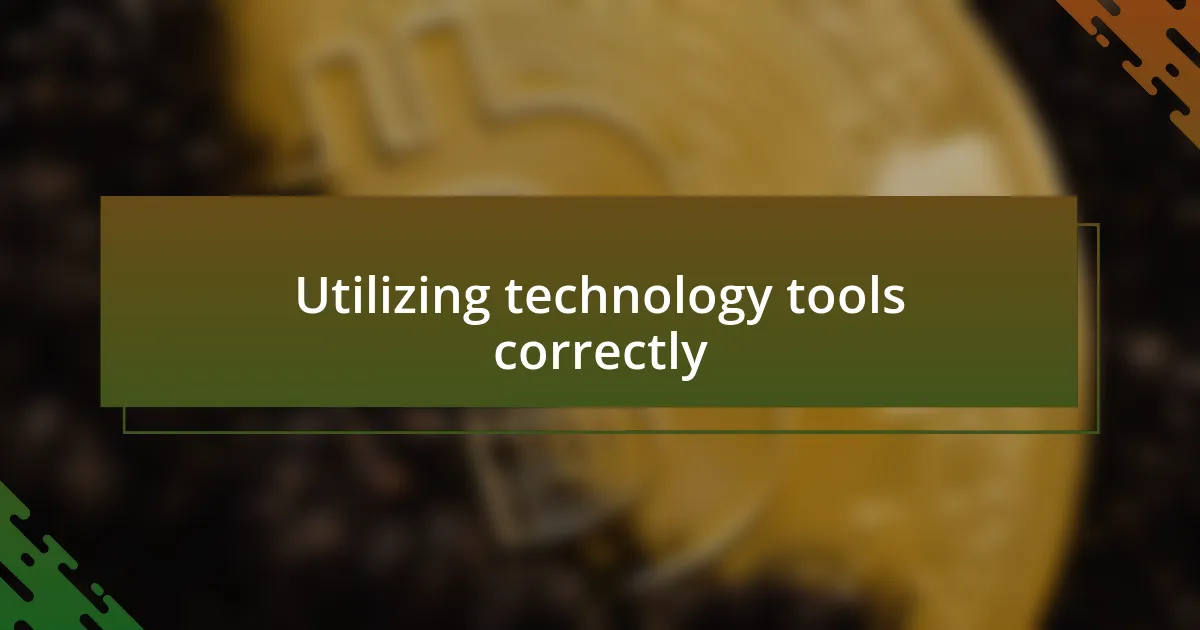
Utilizing technology tools correctly
Utilizing technology tools correctly can truly elevate the experience of virtual events. I’ve found that selecting the right platform is essential—it’s not just about functionality but also about user-friendliness. For instance, I once chose a sophisticated software for a webinar that overwhelmed many participants. They struggled with navigation, and I saw a noticeable drop in interaction as a result. It made me realize that the best tools are those that facilitate ease of use while supporting engagement.
Moreover, I’ve discovered that integrating various tools can create a multi-layered experience for attendees. During one of my sessions, I combined a video conferencing tool with a collaborative brainstorming application. The result? A dynamic environment where participants could share their thoughts visually and verbally. Seeing people’s enthusiasm as they contributed ideas in real-time was a powerful reminder of how well-structured technology can foster collaboration and creativity.
Finally, I can’t stress enough the importance of troubleshooting technology ahead of time. I learned this the hard way when a critical piece of software failed to work moments before I started an event. Even though I had a backup plan, the last-minute stress was palpable. Now, I always run test sessions and prepare alternative solutions, as it helps me feel confident and ready, ensuring that the focus remains on creating an incredible experience for the participants.
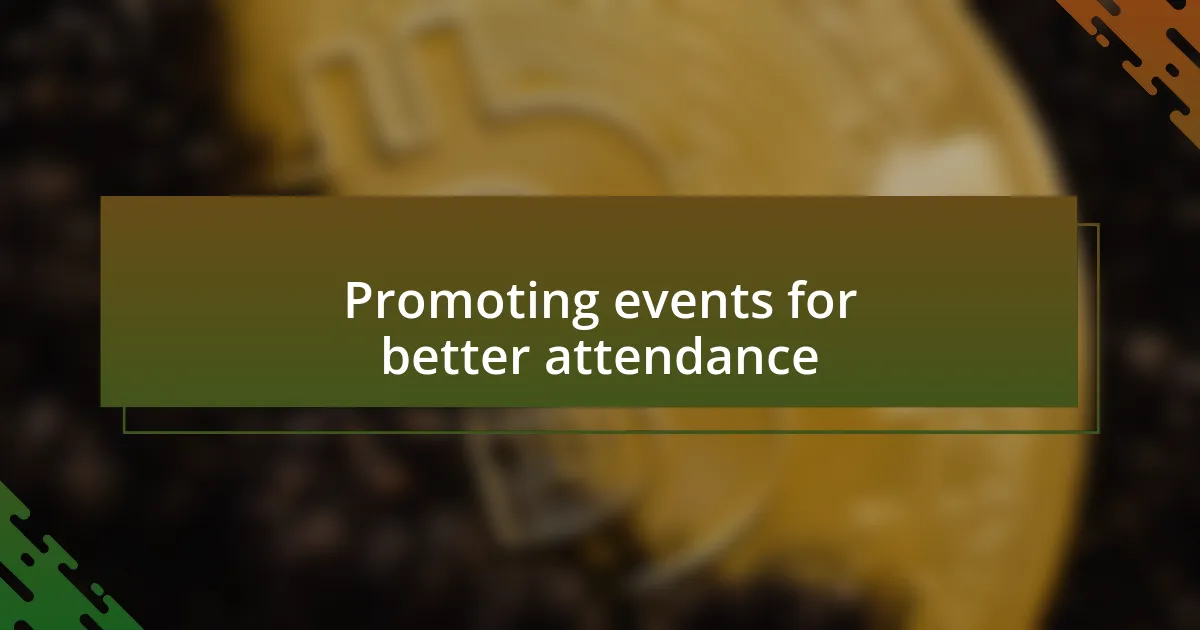
Promoting events for better attendance
Promoting your virtual event effectively is crucial for maximizing attendance. In my experience, using social media strategically can make a significant difference. For instance, during one event, I created an engaging countdown campaign on Instagram Stories that not only generated excitement but also reminded potential attendees to mark their calendars. Have you ever wondered how a simple reminder can transform attendance numbers? It truly does!
Email marketing has also proven to be a powerful tool in my promotional arsenal. One time, I crafted a personalized invitation that highlighted key benefits of attending. I included a compelling story from a previous event that resonated with my audience. This approach resulted in a noticeable bump in registration. I’ve learned that tailoring messages to your audience creates a connection—people want to feel special and informed.
Finally, leveraging partnerships to promote your event can expand your reach exponentially. I once collaborated with a well-known industry influencer, who shared my event details with their followers. The result? A flood of registrations from an audience I had not previously connected with. This experience taught me that when you join forces with others, you tap into new networks that can significantly boost attendance. Would you consider reaching out to like-minded individuals for support? I can assure you, it’s worth the effort.
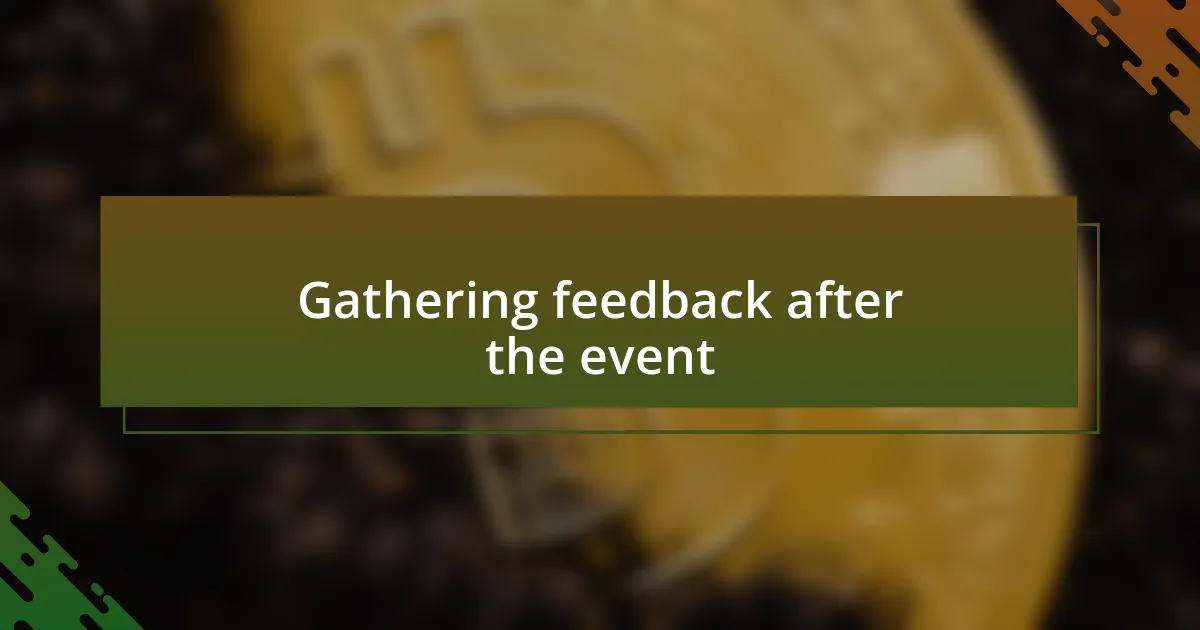
Gathering feedback after the event
Gathering feedback after a virtual event is one of the most enlightening experiences I’ve had. I remember sending out a post-event survey with questions that not only assessed the content but also the overall experience. To my surprise, responses poured in, revealing valuable insights. Do you ever think about how much you can learn from attendees’ perspectives? It’s a game-changer.
I found that crafting open-ended questions allowed attendees to share their stories and suggestions freely. For instance, one participant expressed how they wished there was a dedicated Q&A session, which sparked my interest in redefining my event structure. It made me realize that listening to the audience directly shapes future events, enhancing not just the content but the connection with attendees. How can we improve if we don’t ask?
Analyzing the feedback became an enlightening process. I dedicated a few hours sifting through comments, ratings, and patterns. This not only informed the planning of my next event but also ignited a renewed passion for addressing areas of improvement. Have you considered how feedback can be a powerful driver for growth? It certainly has been for me, allowing me to refine my approach and create even more meaningful experiences.
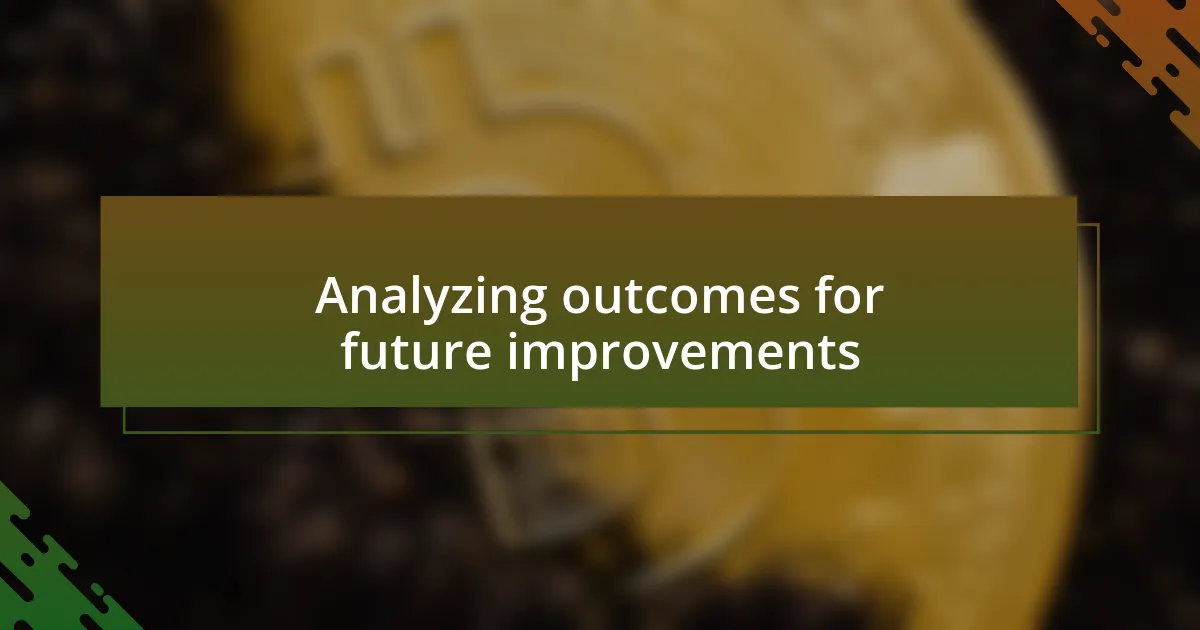
Analyzing outcomes for future improvements
Analyzing the outcomes of virtual events allows me to pinpoint specific areas for enhancement. After reviewing the feedback, I noted patterns that suggested attendees felt overwhelmed by the content pace. This realization was profound; it made me reflect on my presentation style. Have you ever had a moment where you understood a key aspect of your audience’s experience only after looking closely at their input?
One of my most eye-opening experiences came from comparing the event metrics with attendee feedback. For example, despite high engagement rates, many participants mentioned feeling disconnected. This contradiction pushed me to rethink not just the format, but also how I could foster a more interactive environment, perhaps by integrating breakout sessions for smaller group discussions. It’s fascinating how data combined with personal reflections can lead to such significant revelations, isn’t it?
As I synthesized all this information, I felt a mix of excitement and responsibility. The feedback is a treasure trove that highlights what works and what doesn’t, guiding me toward informed decisions. I now approach upcoming events with a keen awareness of what attendees truly seek. Don’t you think that this iterative process of learning and adapting can create events that resonate more deeply? It certainly fuels my commitment to continuous improvement.





